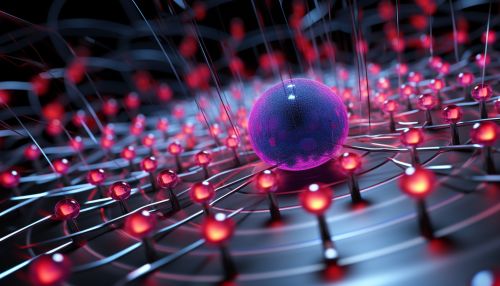Composite Particles
Introduction
Composite particles, also known as hadrons, are particles that are composed of two or more elementary particles. These elementary particles, known as quarks, are bound together by the strong force, one of the four fundamental forces of nature. Composite particles can be further classified into two main types: baryons and mesons.


Quarks and the Strong Force
Quarks are the most basic building blocks of matter, and they come in six different types, or "flavors": up, down, charm, strange, top, and bottom. Each quark carries a fractional electric charge, and it is this charge that allows them to interact with each other via the strong force. The strong force is so named because it is the strongest of the four fundamental forces, approximately 100 times stronger than the electromagnetic force, which is the next strongest force.
Baryons and Mesons
Baryons are composite particles that are made up of three quarks. The most well-known baryons are the protons and neutrons that make up the nucleus of an atom. Mesons, on the other hand, are composed of a quark and an antiquark. They are often involved in the processes that mediate the strong force between baryons.
Properties of Composite Particles
Composite particles have a number of unique properties that distinguish them from their elementary counterparts. For one, they have a property known as "color charge", which is related to the strong force. Unlike electric charge, which can be either positive or negative, color charge comes in three types: red, green, and blue. This property is what allows quarks to bind together to form composite particles.
Another important property of composite particles is their spin. Spin is a form of angular momentum that is intrinsic to all particles. In the case of composite particles, the spin is the result of the combined spins of the constituent quarks.
Experimental Evidence
The existence of composite particles was first proposed in the 1960s, but it wasn't until the 1970s that experimental evidence was found to support this theory. This came in the form of deep inelastic scattering experiments, which showed that protons and neutrons had a substructure, implying that they were not elementary particles.
Conclusion
Composite particles are a fundamental part of our understanding of the universe. They are the building blocks of the matter that makes up the world around us, from the atoms in our bodies to the stars in the sky. Despite their complexity, they are governed by the same fundamental forces that dictate the behavior of the smallest quarks and the largest galaxies.
